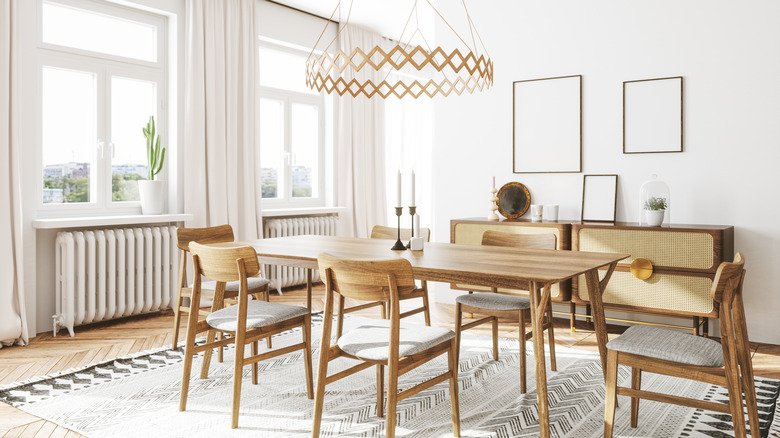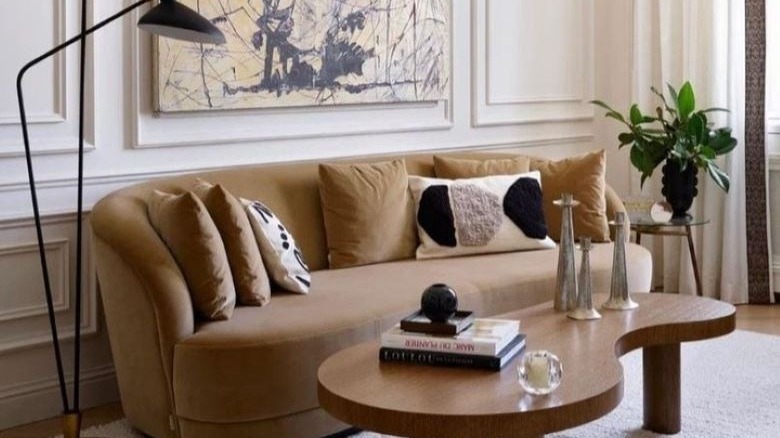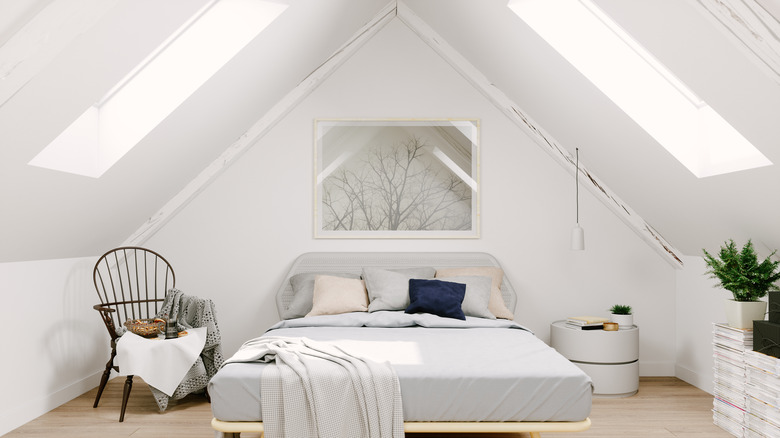A Trendier Alternative To The Dated Scandinavian Design Aesthetic
Remember back in 2016 when the Danish hygge trend of getting cozy was all the rage? Other Scandinavian trends like fika (aka the cake and coffee break) have since filtered into American consciousness; in fact, you can see modern Scandinavian influence in everything from wellness trends to design aesthetic. Speaking of the latter, Scandinavian design became a go-to decorating style after it was popularized on HGTV. As featured in IKEA stores across America, this design aesthetic is all about clean lines, minimalism, neutral tones, and wood accents. Scandinavian countries have gorgeous natural landscapes and dark, cold winters, so the environment informed their design in the form of texture, an emphasis on natural light, and coziness. (Consider this your full-circle hygge moment.)
But just as HGTV popularizes trends, it also educates audiences about styles that are on their way out. And according to experts in 2024, the Scandinavian design aesthetic is getting dated. Yet research tells us that humans are naturally drawn to organic colors and nature, so there's plenty to be taken from this style. If you're a Scandinavian stan, experts recommend leaning into minimalism but punching up the overall look and feel in a trendy way with cozy design elements, like throw pillows and elaborately patterned rugs. This is called modern-traditional — and it brings you the best of both traditional design and clean, minimal structures. It might be just what you need to transform your home into a Scandinavian-style oasis ... the trendy way.
Introducing modern-traditional design
When implementing the modern-traditional style in your own home, Connecticut-based realtor Lauren Reynolds recommends thrifting, explaining that she's seen an uptick in vintage pieces in people's homes. Thrifting can be a good solution for supply chain issues; plus, you can find bold accent pieces at estate sales and flea markets. The balance of old and new will help the vibe to feel fresh. Not to mention, shopping vintage is environmentally friendly, so you'll really be embracing Scandinavian values.
Modern style is all about neutral palettes while the traditional decor aesthetic emphasizes color, so bold pops of color are essential in melding the two styles together. Think patterned rugs, antique coffee tables, and textured mirrors. That said, don't go overboard on your vintage shopping. Clean lines and structure are another key component of modern-traditional design and nothing should feel cluttered.
In good news for lovers of the Scandinavian design aesthetic, natural materials are still in vogue when it comes to modern-traditional decor. But rather than cottage-core, which emphasizes wood, you can use all sorts of natural materials — from bamboo to rattan to concrete. One of the pluses to this style is that you can really put your personal stamp on a house while still staying true to the modern-traditional aesthetic.
The downsides to Scandinavian design
If you're aiming for the modern-traditional look, it's key not to skew too far in either direction. On the one hand, though there's lots to love about Scandi (aka modern) design, there are pitfalls to exclusively sticking with this style. The Scandinavian aesthetic is spartan, and no one wants their home to end up looking boring or uninviting. You can also fall into a uniformity trap, where everything in your living room looks like you bought it from the same IKEA catalog. Another downside to this style is its love for clean, sometimes hyper-stylized lines. This sounds great in theory, but experts caution against filling your home with furniture that's overly sculptural but lacking in function. In other words, when you do buy that sleek accent chair that looked great on Instagram, don't forget to add a comfy cushion or snuggly throw rug.
However, all design styles have pros and cons. Yes, the Scandinavian aesthetic has become dated, but it's also a design style that's proven to add resale value to a home. And, according to a survey of the most and least valuable house styles across the U.S., there's still a demand for modern design. Buyers gravitate towards homes with northwest contemporary and mid-century modern aesthetics, proving that a unique mix of styles can make a home feel homey. If your home looks like it came to life from the pages of an IKEA catalog, it could be time to start thrifting some new decor.


